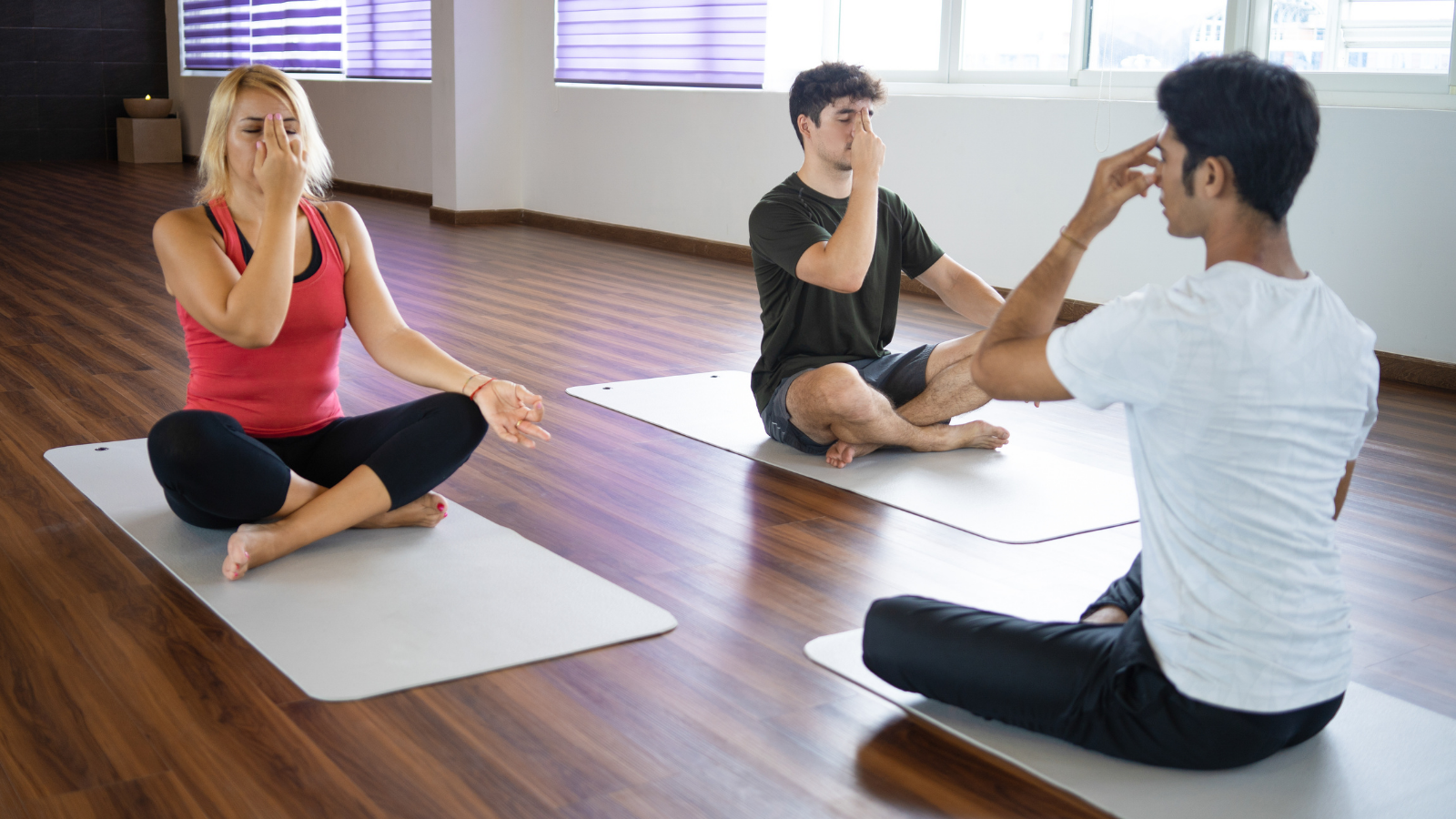Trauma-Informed Yoga: 7 Practical Ways to Begin

“Trauma-informed yoga is not a treatment. Rather, it is an understanding of trauma, its prevalence, and how to generally accommodate people (in yoga classes) who have experienced some sort of trauma. Trauma-informed yoga offers a lens of support that makes space for any potential ways someone could feel or respond to triggers, trying to prevent re-traumatization in every way possible.” Joanne Spence
What does it mean to be a trauma-informed yoga teacher, and why is it necessary? These are the two questions I was curious about when I first heard the words “trauma-informed” in the mental health inpatient setting where I worked in 2008. How did it apply to treating patients? I learned that being “trauma-informed” was about making sure that whatever treatment is being offered to a patient is not retraumatizing them in the name of patient care.

When I first started working in that inpatient setting, I had been teaching yoga for six years. My background was in social work as a counselor, but after a car accident that took me two years to recover from, I identified yoga as a key part of my recovery both physically and mentally. I was mostly teaching simple yoga postures and breathing practices. Both had helped heal my body and unwind my nervous system quite dramatically and allowed me to be pain-free for the first time in two years.
Trauma: A Common Physical Phenomenon
In my book Trauma-Informed Yoga: A Toolbox for Therapists (2021), I state, “Trauma is not rare, as we once believed. Nor is it confined to combat violence or major disasters. In fact, it’s estimated that 90 percent of individuals seeking mental health services have been exposed to some form of trauma, with many experiencing multiple traumas, prompting some to view it as an epidemic (Huckshorn, 2004; Kilpatrick et al., 2013).” Additionally, researcher and psychologist, Catherine Cook-Cottone et al. (2017), uses yoga teachers as a concrete example in stating that, in an average class of 20 students, it is likely that at least one or two individuals will have a history of trauma. That number rises to four or more individuals in higher-risk populations and locations.
The problem with trauma is that we don’t always know that it may be locked in our tissues, so the very act of creating space and opening up our bodies, as yoga does, can inadvertently be triggering without the teacher or student ever knowing why. Psychiatrist and best-selling author of The Body Keeps the Score, Bessel van der Kolk, tells us that trauma is stored in the body and keeps us stuck in the past even without knowing it. He says trauma resides in the body and cannot simply be talked away. Van der Kolk also makes an argument saying trauma that has happened in the body can also be healed through moving the body.
How Trauma-Informed Yoga Can Help
How does yoga help rather than harm? Gentle and restorative yoga practices help tone the vagus nerve. Physiologically, this means that the parasympathetic nervous system is being activated. The vagus nerve governs not one but two circuits of the parasympathetic nervous system; one is called the ventral vagal circuit (rest and digest). The other is the dorsal vagal circuit (collapse, death-feigning). Researcher, eminent scientist, and originator of polyvagal theory, Stephen Porges, states that the breath provides the most direct access to the nervous system. A breath-focused practice has a direct impact on the vagus nerve. We as yoga teachers have a lot to contribute to our students’ wellbeing when we can skillfully and knowledgeably tap into yoga’s rich history of pranayama.
7 Ways to Add Trauma-Informed Yoga to Your Classes
Here are 7 things you can offer trauma-informed yoga in your classes:
1. Slow down your teaching. If you do nothing else, whatever style or lineage you teach from, simply slow down the pace, let go of your plan, and allow the uptight minds and bodies in front of you to unwind.
2. Use invitational language. Instead of saying “I want you to…”, try the phrases “I invite you to…” or, “If you want to, join me in…”, or “Would you like to try…?”
3. Offer a low-stimulus, hospitable, and welcoming environment. Have soft, diffused lighting—not too dim. Avoid fluorescent lighting if possible. Give concrete guidance as to how someone can prepare for class and orient themselves to the space ahead of time if possible.
4. No hands-on adjustments. Instead, use clear, short cues.
5. Keep your eyes open. Observe your students discreetly.
6. Pause. Often. Resist the urge to fill the space with words. Pauses are capable of heavy lifting if we can become comfortable with them as an opportunity to relish silence. Take a beat or two before moving on to the next cue.
7. Practice what you teach. Radical self-care and self-awareness will help you be the calm, non-anxious presence your students need.
Breathe Into Trauma-Informed Yoga
 Perhaps the above points seem like common sense but, over the course of the last 20 years of teaching, I have not found that to be true. Yoga is a powerful practice. It doesn’t have to be complicated or overly physical. For over a millennium, yoga was primarily breath-focused. It is only in the last century that yoga has been dominated by asana practice. Let’s collectively bring back breath-focused practice.
Perhaps the above points seem like common sense but, over the course of the last 20 years of teaching, I have not found that to be true. Yoga is a powerful practice. It doesn’t have to be complicated or overly physical. For over a millennium, yoga was primarily breath-focused. It is only in the last century that yoga has been dominated by asana practice. Let’s collectively bring back breath-focused practice.
What I am advocating is that all yoga teachers and yoga therapists teach in a trauma-informed manner as a universal practice, akin to handwashing. In this way, your classes will be more accessible and less likely to be triggering for your students who have experienced trauma, whoever they are. You can provide an opportunity for trauma-informed yoga to do its best work first by regulating yourself, then support your students to down-regulate by activating the parasympathetic nervous system. In doing so, we, teachers and students, can become a regulating force in the world. With gentle and restorative yoga, becoming a regulating force in the world is more doable than you think.
Also, read...
Fascia and the Vagus Nerve: Healing from the Inside Out
What Your Body Tells You Can Protect You From Stress, Study Suggests
Related courses
Breath as Medicine: Yogic Breathing for Vital Aging
Yoga and Myofascial Release: Releasing Chronic Tension with the Bodymind Ballwork Method
Yoga and Detoxification: Tips for Stimulating Lymphatic Health

Joanne Spence, MA, ERYT 500, is a recovering social worker, certified yoga therapist, and spiritual director. She is the founder and executive director of Yoga in Schools. Joanne trains and teaches all sorts of amazing people, both nationally and internationally. She has taught yoga in prisons, hospitals, schools, churches, and sometimes on street corners. She specializes in working with adults and children who are experiencing chronic pain, trauma, depression, anxiety, ADHD, and insomnia.
Her first book, Trauma-Informed Yoga: A Toolbox for Therapists: 47 Simple Practices to Calm, Balance, and Restore the Nervous System was released in March.
Joanne has been married to Doug for over thirty years. Together, they have three adult children, all of whom practice yoga! When she is not teaching, Joanne loves to read, write, hike, bike, travel, cook, and even dance a little—just not all at the same time.
Visit her website at www.joannespence.com and www.yogainschools.org. Or follow her on social media @urbanoasispgh on IG, and on FaceBook.





